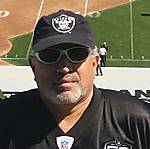Lots of aftermarket goodies are going into this one, including the dreaded Aires cockpit. I say "dreaded" because it is really their set designed for the Hasegawa F-16 family with a few minor tweaks making it a little (very little) more adaptable to the Tamiya kit. As such, much surgery, grinding, cutting, fitting, etc. is required to get it to fit. There will still need to be some putty work at the front and rear ends but nothing too hideous. Of course, I learned about the Hasegawa thing AFTER I bought the set.

So, here are a bunch of photos to get you caught up to where I am now. Mostly work on the cockpit and the intake.
First, the real life inspiration:

and the goodies!

Prepare to cut (with apologies to Rocky fans.)..

You know, I think it will all fit after all!


Painted pit pieces...




My secret seamless intake tools - sandpaper wrapped around a piece of egg carton foam and held with angled cross-locking tweezers. It really lets you get in there to clean up the inside seams. Then, a couple thick coats of Rustoleum Semi-gloss white enamel. I just poured the stuff into the intake sections and let dry. Very messy but cleanup is easy with mineral spirits. Also takes a while to dry but it does make for a smooth surface.





I'm just about ready to wedge the cockpit into the fuselage. I've got a little more work on the main instrument panel to finish first. I wasn't satisfied with the look of the instrument faces, which Aries does with an acetate sheet backing a photo-etch panel. Even with the back of the acetate painted white, the dial faces don't show very well. Therefore, I'm using some of Mike Grant's excellent Jet gaugu decals for the larger dials.
That's it for now! The next post I make will be after I get the cockpit in and the fuselage together.
OH! I forgot to mention...the seat I'm using is the Quickboost F-16 seat. In case you don't know, Quickboost is Aires and the QB seat is identical to the one in the Aires set except that the seat belts are cast in instead of a bazillion separate tiny p/e parts that Aires does. Also, there are a couple of detail parts (the things that stick out from the head rest and the center pull handle) which are resin for the QB seat but p/e in the Aires. I prefer painting the cast belts and using the resin parts. More realistic looking in my opinion.
Cheers,
Eric











































